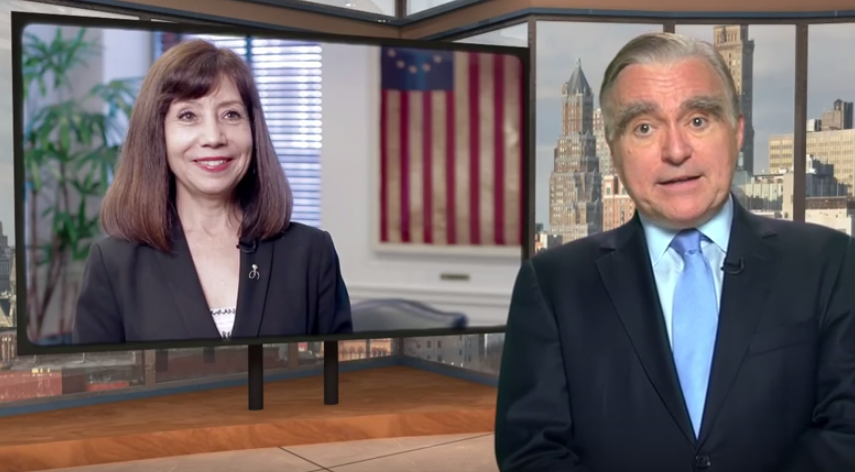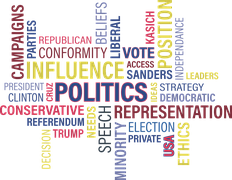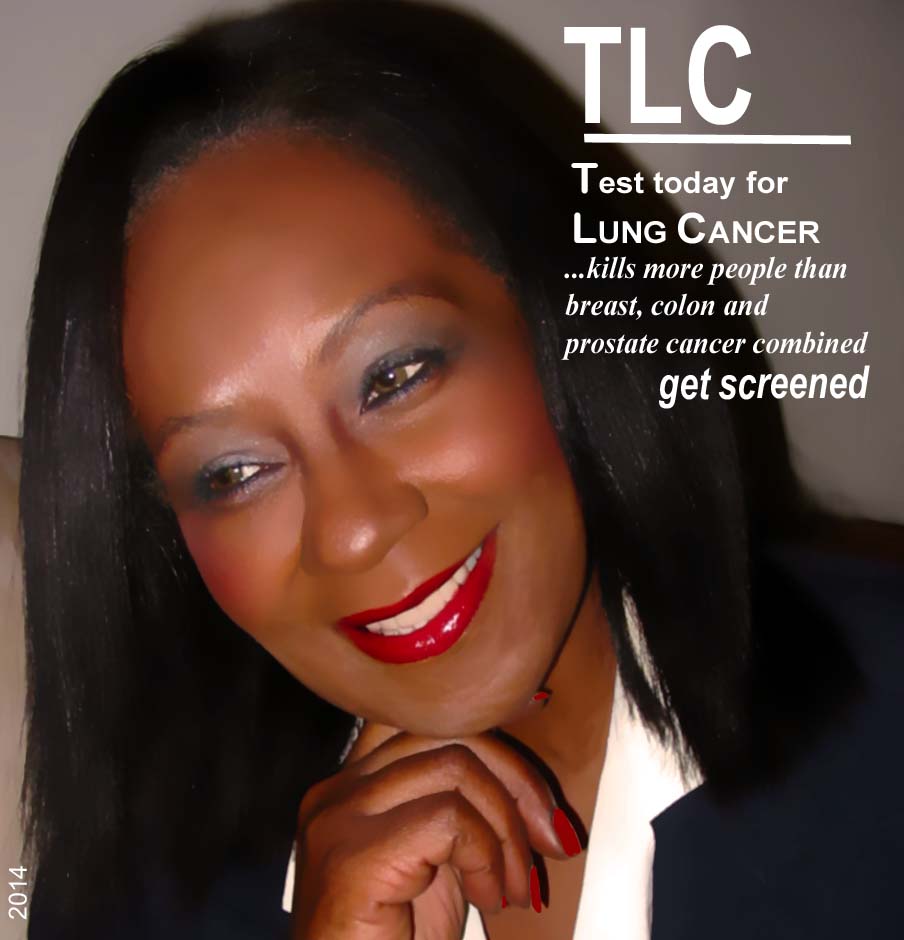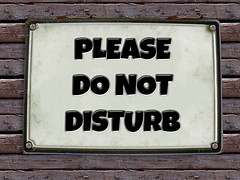Three people called me this week because their public speaking fear is holding them back. It's affecting their brand, their reputation, and their career advancement. It's causing them to remain quiet in meetings and to decline speaking opportunities. It’s time to knock out the fear of public speaking! Public speaking is no different from any other fear and you can kick the habit long before you kick the bucket.
How to Handle Difficult Audiences
How To Give A Motivational Speech
Press Release: Best Selling Business Author Diane DiResta Featured in 1,600 Offices Across the United States by Captivate Video Network
C-Suite Network, announced today that their over the top television (OTT) business channel, C-Suite TV, will begin a new strategic partnership with Captivate, the leading location-based digital video network. Captivate will air highlights from Best Seller TV, a television show featuring business authors and content from their top-selling business books.
Diane DiResta was the first expert to be featured to kick off the partnership.
How to Give a Knockout Investor Presentation
Does Uptalk Make You Upchuck?
Press Release: Speaking Expert Diane DiResta Interviewed on Everyday MBA Podcast
Diane DiResta, CSP, author of Knockout Presentations, and Founder and CEO of DiResta Communications, a New York City consultancy, discussed techniques for public speaking with Kevin Crane, host of the Everyday MBA podcast.
In Episode 82, DiResta discussed her book Knockout Presentations and techniques to turn public speaking into a strength, overcome anxiety, and design a presentation for maximum impact.
Make Your Training Fun and Memorable: Techniques to Accelerate Learning
Are you still stuck in lecture mode? Don’t get me wrong. We all have to convey information. But after seven minutes or so, the brain starts to drift. Lecturing, along with reading, are the most passive and least effective forms of learning. Make learning active! By involving your audience and getting them moving they will understand and retain the information better and longer.
What Donald, Hillary, and Bernie Taught Us About Presentations
 This U.S. presidential election was like no other. Hillary Clinton and Donald Trump went head-to-head in a heated debate with more twists and turns than a roller coaster ride. The ongoing soap opera kept people riveted to their screens -- sometimes inspired and other times disgusted. Regardless of the outcome, there were lessons learned about public speaking.
This U.S. presidential election was like no other. Hillary Clinton and Donald Trump went head-to-head in a heated debate with more twists and turns than a roller coaster ride. The ongoing soap opera kept people riveted to their screens -- sometimes inspired and other times disgusted. Regardless of the outcome, there were lessons learned about public speaking.
Here some presidential guidelines to deliver winning presentations:
Deliver a Message that Resonates -- To be effective in any presentation, a public speaker must have a message that resonates with the audience. While sizzle is important, if the message doesn’t speak directly to the self interests of the audience, it won’t be remembered and it won’t move the crowd.
Both Sanders and Trump leveraged the emotions of the audience and spoke directly and specifically to their frustrations, problems, and concerns. To resonate with an audience the presenter needs to speak simply, use shorter words, and to tell stories that relate to what the audience believes and experiences. When the presenter speaks their language, the audience feels heard, understood, and connected. And that builds trust.
Smile and Deflect -- At some point every public speaker will encounter resistance or hostility. The worst approach is to get defensive. When you play your opponent’s game, you lose. The debates got nasty at times. When Trump attacked Hillary, she reacted by smiling until it was her turn to rebut. Hillary showed poise under pressure. In situations other than a debate, the presenter can involve the audience to deflect hostility. There’s nothing more powerful than peer pressure.
Do the Unexpected -- Attention spans are growing shorter. There’s now research that states that the attention of a goldfish is one second longer than that of a human. Yikes! To keep an audience engaged and attentive, be different.
Trump broke the rules. He was unpredictable and said things that were politically incorrect. The audience found it refreshing because he said what they were thinking. When presenters avoid naming the elephant in the room, the audience retreats and resists. It’s difficult to be influential if you tiptoe around the truth. (Yes, he went too far, and lost credibility for being inappropriate to say the least). When used appropriately, the element of surprise will keep the audience with you.
Get Personal -- All three candidates showed a personal side of themselves by involving their family and sharing stories. Every audience is thinking three things subliminally -- Who are you? Who are you to tell me? What’s in it for me?
An audience first wants to know the presenter as a person, not as a talking head. Sharing personal stories and talking about one’s family humanizes the speaker. Substance without personal connection will not yield results. An audience relates to people they know, like, and trust. Never underestimate the likability factor.
Be Gracious Victory and Defeat -- Sometimes you win, sometimes you lose. It’s true in politics, sports, and at work. A gloating winner or a sore loser will cast themselves in a negative light. What separates the ordinary from the great is how a presenter handles victory and defeat. When Donald won the election, he complimented Hillary on her toughness, hard work, and service. Bernie and Hillary were gracious when they conceded the election. Hillary’s concession speech inspired the country to unite and paved the way for a new administration. This is truly the mark of leadership.
Most of us will never run for office but we can take a page out of the election playbook and remember to apply the good, and eliminate the bad and the ugly.
Press Release: Knockout Presentations Blog Named A Top 50 Public Speaking Blog by Feedspot
Knockout Presentations Blog, written by Diane DiResta, CSP, author of Knockout Presentations, and Founder and CEO of DiResta Communications, a New York City consultancy, was named one of the top 50 public speaking blogs by Feedspot.
Slow Down Speed Talking
If you’ve ever been called a motor mouth you could have a communication problem. You’re never at a loss for words. But when you speed up people will lose part of the message. To make sure this doesn’t happen to you here are some tips to slow you down.
People speak fast for a variety of reasons. It could be geographic. People from the New York metro area tend to speak faster than people from the South. Another reason is nervousness or stress. Increased stress could be the reason for a more rapid rate. Are people not understanding you because your rate is too fast or because the words are not clear? Either way, slowing down will increase your clarity.
The first step is self awareness.
Begin by taping yourself during a normal conversation and be sure to get the other person’s permission. Listen for speed and clarity. Most people speak at a rate of 125 words per minute. The brain can process twice as fast. Develop an awareness of those situations when you speed up. Is it during oral exams? On the telephone? When you’re rushing to class? At a sales call?
The second step is behavior change.
- Practice deep breathing exercises to slow you down in the morning. Meditation and breathing are a healthy way to start your day and will help to calm you down. You can find exercises in Knockout Presentations in chapters 2and 3.
- Practice the pause. Use the beat method. Count two beats at the end of every sentence. For example, Today is Monday (1,2) Tomorrow will be Tuesday (1,2) The problem is usually not saying the words too fast but not putting stops at the end of a sentence. People need a few seconds to process what was just said. (And you need to come up for air)
- Read with rhythm. Practice reading poetry. It has a natural rhythm with built in pauses. Pause for a comma, and use a longer pause at the end of a verse. A few good practice poems are the Twenty third Psalm from the Bible, The Charge of the Light Brigade, by Alfred Lord Tennyson or the opening passage from A Tale of Two Cities by Charles Dickins.
- Listen more. Instead of rattling on, make a statement and ask for a response. “Does that make sense?” ” How does that sound?” are a few ways you can dialogue instead of talking at people.
The third step is self-monitoring.
- Use the buddy system. Have a friend give you feedback when you start to speed up.
- Let others in on your secret. Tell them you’re working on slowing your speech and would like to know if you spoke slowly enough.
- Create job aids. Write the word PAUSE on a post-it. Place the paper on your computer, the telephone, and your date book to serve as a reminder.
To increase credibility, confidence, and clarity, slow down your speed talking.
Press Release: DiResta Speaks to Military Women Veterans at Operation Reinvent
Diane DiResta, CSP, author of Knockout Presentations: How to Deliver Your Message with Power, Punch and Pizzazz, and Founder and CEO of DiResta Communications, a New York City consultancy, was invited to speak to military women veterans at the Operation Reinvent event. The event was a live webcast from NYC to Fort Bragg, North Carolina and Fort Hood, Texas.
The mission of Operation Reinvent is to prepare military women for transition to civilian life.
Press Release: Diane DiResta Interviewed for C-Suite TV
Press Release: Diane DiResta Gives a Knockout Interview on WABC Radio
Diane DiResta, CSP, was interviewed by Yitzchok Saftlas, host of Mind Your Business on 77WABC radio, during the C-Suite conference at the NY Times building, in New York City. DiResta stated that, “Speaking is a leadership skill and is the new competitive advantage. You can no longer be without this skill.”
15 Tips to Master Video Presentations
 What do today's business presenters have in common with television anchors? They both have broadcasting skills. With youtube being the number two search engine and companies demanding online learning, public speaking has gone digital. According to Business Insider 2014, “About 50 million people in the U.S. now watch video on their mobile phone." Public speakers who shun the camera will be left behind.
The first step to being a master presenter is to understand the difference between in- person speaking versus video presentations. Here are a few tips for speaking in a digital media world:
What do today's business presenters have in common with television anchors? They both have broadcasting skills. With youtube being the number two search engine and companies demanding online learning, public speaking has gone digital. According to Business Insider 2014, “About 50 million people in the U.S. now watch video on their mobile phone." Public speakers who shun the camera will be left behind.
The first step to being a master presenter is to understand the difference between in- person speaking versus video presentations. Here are a few tips for speaking in a digital media world:
- A video recorded presentation is one way communication. That means you can’t read the audience and pivot in the moment to meet their needs. So it takes a lot of preparation to deliver a compelling message and provide value to your target audience.
- In the case of teleconferencing, appoint a facilitator at each site to manage the technology and to facilitate the meeting. Be aware of delay time and plan for it by practicing longer pauses. Pause and silently count to four. That will allow enough time for the speaker to finish and for the listeners to hear the last word.
- Know the time zone of your audience. It may be 8:00 a.m. in New York, but if it’s 2:00 p.m. in Amsterdam you don’t want to start the meeting with “Good morning”.
- Display a visual agenda. People need a roadmap and it will keep the meeting or presentation focused.
- Have a back-up plan. Be able to continue by telephone if the video fails. It’s a good idea to do a test drive of the technology 15 minutes before the presentation. As a hedge, send the PowerPoint deck in advance.
- Make love to the lens. People don’t know where to look when speaking on skype. When you look directly at the caller, they see you looking down and you lose that eye connection. Try this instead: When speaking to them, look directly at the webcam. When you are listening, look at the caller.It’s uncomfortable speaking to a camera; yet that’s exactly what the presenter needs to do during webcasts and media interviews. In live presentations the presenter feeds off the audience reaction. With video, the presenter imagines the lens is a person. It’s important to maintain a steady gaze. If your eyes are darting you’ll be perceived as nervous or untrustworthy. And practice smiling and talking. Broadcasters do this easily. A serious delivery will weaken the likability factor.
- Video is an energy drain. There is an exchange of energy between a speaker and an audience. When that energy is strong, it’s palpable. That’s not the case with video. As a result, you won’t convey energy the way you do in a live performance. For that reason, you need to pump up your performance on video. In a video the presenter can easily come across as flat. Push your energy higher than normal to have the same intensity level when you’re live and in person.
- Minimize gestures. Wide, sweeping hand movements are distracting on video. Use fewer and smaller gestures. If seated, sit with both feet on the floor and lean forward at a 15 degree angle. Place both hands on the table. This is a confident speaking and listening position. You’ll be perceived as confident and it will stabilize you. Avoid excessive head nodding and jerky movements.
- You are always on stage. If someone else is speaking, chances are you are still in view. Be careful about sloppy behaviors such as slouching, looking at your phone, side talking or looking bored. The presentation isn’t over until the camera is off.
- You’ll look heavier on video. Video is two dimensional which flattens the presenter. I once was videotaping a client for a presentation. It was amazing that when I looked at her directly she appeared slim. When I looked through the camera lens she looked heavier.To manage the widening effect, dress for the camera.Remember that light colors enhance and dark colors diminish. A client of mine was unhappy with her video because she thought she looked heavy. She was wearing a boxy white jacket which gave her a wide appearance. We did a make-over. This time she wore a tapered navy blue jacket which had a slimming effect.Another way to look thinner on video is to stand at a ¾ angle with your hips back. If you’re in a close-up, drop your forehead slightly to avoid a double chin.
- Wear the right colors. White and black are not good colors for video. White creates glare. It’s better to wear off-white or pearl grey. Icy pastel colors look washed out on camera and are not a good choice. Red can bleed or look muddy. A better choice is burgundy. Avoid stripes and large bold patterns. You’ll look like a TV test pattern. When in doubt, blue is a good choice for video. It films well and psychologically blue means trustworthy, conservative, stable.
- Lighting is key. While lighting is important in a live performance, harsh lighting won’t be as damaging. On video, fluorescent lightening will highlight lines and shadows in the face and can also hurt the eyes. Use soft lighting that flatters your face.
- Choose the backdrop carefully. When doing a video presentation always ask about the backdrop. If you’re filming from home, make sure you don’t have messy papers stacked up behind you. If you’re filming off-site, choose clothing that will work with the backdrop. Early in my career I was being filmed for a speaker showcase. I asked the producer if my fuchsia suit would televise well. He said yes. Unfortunately. I asked the wrong question. I should have asked “What color is the backdrop?” When I arrived I found myself in front of an orange curtain. The fuchsia suit bled into the orange and looked terrible on film. This wouldn’t have been an issue in a live presentation.
- You cannot be boring. Engagement is crucial.You have 5-10 seconds to grab attention in a video presentation. The key to success in video presentations is good storytelling and a highly targeted audience who will appreciate the value. Being boring is deadly in any venue. A live audience will show more tolerance by listening longer. If your video presentation is boring the viewer will click off instantly. A video presentation needs to have greater engagement. A measure of engagement, is how many people watch the entire video. According to Industry standards, a 15-20% complete viewing of a 2 minute video is considered a good engagement rate. That means most viewers are not watching the complete video.
- The day of the talking head is over.To increase engagement, keep a fast pace. You need to keep the video moving. Add slides and images while you are speaking. Fly in bullet points as you speak. Keep the presentation brief. If it’s a formal speech aim for no more than 18-20 minutes. Sales presentations need to be crisp, engaging, fast moving, and brief.In my own experiment, I noticed that every time I reached for the fast forward knob, the picture would change. This happened continually as if the videographer was reading my mind. Intrigued, I started to look at the time. The frames were changing every four seconds-the same time I wanted to fast forward.
If you’re not producing video presentations you’re leaving money on the table. Your digital footprint is now an important part of your personal brand. Interviewers are asking for videos. LinkedIn now allows videos to be added to profiles. Video is the ultimate selling tool. It addresses the know, like, trust factor.
Video is not going away. To be current, you need to master video presentations.
Another Screw Up By Debate Moderators
 It was round two for Hillary Clinton and Donald Trump at the second presidential debate held at Washington University in St. Louis.
The atmosphere was tense as evidenced by the candidates' refusal to shake hands. But while the focus is supposed to be on the candidates, they were upstaged by Martha Raddatz, who co-moderated with Anderson Cooper. Where are the good moderators? It's been a challenge to respect the facilitators in these debates because they don't seem to understand the role of a moderator. Here are some guidelines for being an effective moderator:
It was round two for Hillary Clinton and Donald Trump at the second presidential debate held at Washington University in St. Louis.
The atmosphere was tense as evidenced by the candidates' refusal to shake hands. But while the focus is supposed to be on the candidates, they were upstaged by Martha Raddatz, who co-moderated with Anderson Cooper. Where are the good moderators? It's been a challenge to respect the facilitators in these debates because they don't seem to understand the role of a moderator. Here are some guidelines for being an effective moderator:
Ask prepared questions. The quality of the questions will impact the quality of the debate. Both Anderson and Martha asked relevant questions and invited guests to participate.
Share the spotlight. During the debate, Anderson ceded control to Martha who dominated the conversation. At times, Anderson seemed invisible. What is the point of having two moderators unless they are both contributing?
Keep control. The job of the moderator is to begin and end on time and to give equal time to both candidates. There were several times when they allowed the candidates to speak longer than the allotted two minutes. It's also the job of the moderator to keep the focus and redirect the candidate to answer the question.
Be impartial.The kinds of questions and the number of questions should not favor one candidate over another. This wasn't always the case. Trump alluded to "three on one." Skilled moderators do not show their hand. The audience should not be able to sense the preference of the moderator.
Facilitate don't participate. This is where Raddatz really blew it. A moderator asks questions but doesn't offer opinions. The purpose of the debate is to showcase the candidates- not the moderators. Facilitation skills seem to be difficult for many professionals to master. In order to be a good facilitator you need to suspend your ego and draw the conversation from the participants. A facilitator is the conductor, not the musician. Facilitation is different from interviewing and from reporting. Maybe it's time for journalists to be trained in facilitation skills.
End on a positive note. People remember the last thing they hear so you don't want to wrap up in a negative atmosphere. The moderators did a good job by allowing the last question of the evening to be "What do you admire in the other candidate?"
Who would you choose to moderate the next debate?
What Hillary Clinton Can Teach Us About Using Your Voice
 There’s been talk about Hillary Clinton’s coughing and whether she’s damaging her voice. It made me think of how speakers unknowingly abuse their voices.
Often public speakers yell in order to project. Yelling is not only irritating to listen to, but will cause eventual hoarseness. It causes strain on the vocal folds. Presenters should request a microphone, project from the diaphragm, and not from the neck muscles. And incessant coughing can also cause damage. Coughing causes the vocal folds to forcefully slam together.
There’s been talk about Hillary Clinton’s coughing and whether she’s damaging her voice. It made me think of how speakers unknowingly abuse their voices.
Often public speakers yell in order to project. Yelling is not only irritating to listen to, but will cause eventual hoarseness. It causes strain on the vocal folds. Presenters should request a microphone, project from the diaphragm, and not from the neck muscles. And incessant coughing can also cause damage. Coughing causes the vocal folds to forcefully slam together.
One of the bigger problems for professional and public speakers is laryngopharyngeal reflux, an inflammation near the back part of the larynx due to acid rising to that point. Thirty-five million people in the United States have acid reflux.
“This inflammatory condition causes the vocal folds to function less efficiently leading to vocal fatigue and poor projection,” states Dr. Thomas Murry, clinical director, professor of speech pathology in otolaryngology at the Voice and Swallowing Center of Columbia Presbyterian Medical Center, Columbia University. Reflux is most common among speakers because so many speakers are on the go, stressed and may have poor diets. Being aware of the symptoms of reflux can help speakers take preventative steps to take care of the problem.
The big five symptoms are:
- Vocal fatigue
- Lack of projection
- Hoarseness as the day wears on
- Throat clearing
- Increased phlegm in the throat
Preserving the Voice
To preserve the voice, don’t constantly clear your throat or talk over noise. Instead, Murry recommends the silent cough technique.
The silent cough technique is a way to clear the throat without violently banging the vocal folds together. The silent cough is done by breathing in air and blowing the air out fast through your throat and mouth without making a sound. Immediately after the silent cough, you should tuck your chin down toward your chest and make a strong swallow. The silent cough often clears mucous that clings to the vocal folds or near them. The silent cough is an important element of vocal hygiene and helps to prevent unnecessary trauma to the vocal folds. It is especially important to use the silent cough after surgery to the vocal folds.
If the symptoms of reflux continue, go to the doctor before the problem becomes severe.
Another common physical voice problem is vocal paresis, a weakness in one or both vocal muscles manifesting in breathiness or fatigue. Both folds must come together symmetrically to produce a clear, resonant voice. Vocal paresis can be caused by a flu or viral infection. When the nerve is inflamed, the condition can last for six months to a year, causing the speaker to change habits to adjust to the inflammation. A monotone may be an indicator of a minor defect or partial paralysis. Also, public speakers who have difficulty projecting could have some vocal fold asymmetry. Tape yourself and listen to how you sound. Also, be aware if you find people asking you to talk louder. This may be an indication that you are suffering from vocal paresis.
Breathiness and Hoarseness
Women are more inclined to get polyps or nodules, which are growths that prevent complete closure of the vocal folds and create breathiness. “In females, the back part of the vocal folds never completely closes due to the way they are formed. So the female voice is always going to be a little bit more breathy than the male’s because of anatomy,” states Murry.
If you are suffering from breathiness, take action and get checked out. It is always better to be safe than sorry. The definition of the term “frustrated and feeling sorry for yourself" is to wake up to find that you’re hoarse when you have a big speaking engagement.
When hoarseness is the problem, first determine that there is no hemorrhage. Then start a process of hydration and steam. Public speakers should travel with a facial steamer. When staying in a dry hotel room, opera singers use them every hour for five minutes. Alternatively, you can make boiling water in your coffee pot, pour it into the ice bucket, and throw a towel over your head to reap the benefits of steam.
To avoid becoming hoarse, avoid alcohol, chocolate and caffeine before a speech. They will dehydrate the mucous membranes, causing hoarseness. Finally, after an all-day motivational program, get plenty of rest and drink lots of water. Before you climb into bed, toss out those mint chocolates on your pillow; they are a double whammy because the mint relaxes the lower esophagus and allows acid to come up.
Making a difference in the lives of your audience is done with your instrument—your voice. With proper breathing, voice training and vocal hygiene, your voice will be strong, healthy and you’ll master true vocal power.
How to Give a Eulogy When You're Not a Public Speaker
 What do you do when a loved one dies and you're the person to give the eulogy? Last weekend I attended the memorial service of my friend, Linda who lost her battle to lung cancer at the age of 63.
Memorial services are usually bittersweet. The service was beautifully inspiring and sad at the same time. The tributes from her sorority sisters gave an insight into her personality and the reader of her legacy left a powerful impression of Linda's contribution of the world. The soloist sang Linda's favorite song with feeling and his voice filled up the room with love.
What do you do when a loved one dies and you're the person to give the eulogy? Last weekend I attended the memorial service of my friend, Linda who lost her battle to lung cancer at the age of 63.
Memorial services are usually bittersweet. The service was beautifully inspiring and sad at the same time. The tributes from her sorority sisters gave an insight into her personality and the reader of her legacy left a powerful impression of Linda's contribution of the world. The soloist sang Linda's favorite song with feeling and his voice filled up the room with love.
The preacher read a passage from the Bible and eloquently spoke about Job, He told us that we had not lost anything. That Linda had been given to us as a gift and we shared that gift for 63 years. His sermon and his delivery were inspiring, uplifting, and impassioned.
While the preacher was a trained public speaker, the day may come when you are tapped to give the eulogy. You don't have to be experienced in public speaking to be effective. Here are six tips to remember when memorializing a loved one's life:
Develop a Time Line. If you don;t know where to begin, draw a horizontal line on your paper and mark down significant events or memories. It can be in 5 or 10 year intervals or any time frame that works.
Discover a Theme. Once you look at the timeline, you may see trends or stories that can be folded into a them. Ex. You always did it your way. You always went the extra mile.
Sequence your Ideas.Next, organize the most important and meaningful events and stories in a sequence that flows and is easy to follow. Don't give a biography of the person's entire life. Keep it brief.
Keep it Positive. Don't dwell on the failings or negative times unless it culminates in a story of the hero's journey. Interjecting humor can help lighten the atmosphere.Talk about the deceased in a positive light but do be genuine. What contributions did the departed make? How did the loved one make people feel? How would that person want to be remembered?
Speak from the Heart. It's fine to use a script or notes, however; tell stories. Don't sound like you're reading a text. If you knew the person, share your experience. Relive the moments and events and give people a sense of the person. And it's okay to cry. Have people nearby and take a minute to compose yourself and continue. The audience will understand.
Bury your Fear. Put your focus on telling the person's story and not on your nervousness.Jerry Seinfeld said it best when he quipped, "Most people would rather be in the casket than giving the eulogy." Remember it's not about you.It's about them.
What a Cashier Taught Me about Presentations
 I went to the supermarket to pick up a few items. Not wanting to wait in line, I found a cashier who was without customers. She had her back turned as she was shuffling a deck of coupons. I approached her and stood there expecting her to stop what she was doing to serve me. She did not. She continued to organize the coupons and never said a word to me or attempted to make eye contact. She placed a rubber band around the coupons, put them in the drawer and without saying a word, started to ring up the two items.
I went to the supermarket to pick up a few items. Not wanting to wait in line, I found a cashier who was without customers. She had her back turned as she was shuffling a deck of coupons. I approached her and stood there expecting her to stop what she was doing to serve me. She did not. She continued to organize the coupons and never said a word to me or attempted to make eye contact. She placed a rubber band around the coupons, put them in the drawer and without saying a word, started to ring up the two items.
It was like I wasn't there.
Viewing this as an experiment in communication, I said nothing. Neither did she. After ringing up the groceries she spoke for the first time. "$6.07, " she said. As I was digging for change she turned and talked to the other cashiers. I paid the bill and left. Talk about feeling invisible.
Yes, she was a young person being paid minimum wage but that's not an excuse for being rude. (Although I doubt that was her perception). I've had friendlier and more helpful service from others in her position. It made me think about what was being communicated by this cashier. By not acknowledging that I was standing in front of her I felt ignored and not valued as a customer. She had no idea of the impact of her silence and lack of friendliness. By not greeting a customer and avoiding eye contact, she tarnished the brand of the store. There was little difference between doing business with her and scanning my own groceries in the self service line. I left with a negative feeling about the supermarket although I've shopped there many times.
My husband reminded me that he doesn't like going to our local Thai restaurant even though the food is good and inexpensive. He dislikes the waitress who doesn't smile and looks annoyed all the time. He calls her "a pill". Think about it. He doesn't want to eat where the food is good because he doesn't like her attitude. She non-verbally communicates that the customers are an annoyance to her. She's creating a negative feeling.
How often do we minimize soft skills in the business world? Something as seemingly basic as greeting a person or making eye contact can have a big impact. It's part of your presentation. In graduate school, I waited tables at a New York City fast food restaurant in the middle of Times Square. (That's another story). I quickly learned the ROI of interpersonal skills. A greeting, friendly tone, and a smile could yield a better tip.
There's a barista at my local Starbucks named Gus. He remembers everyone's name. When I walk in the store, he starts making my green tea because he knows my order. Gus makes customers feel special and I always ask for him.
So the point is this. We are always presenting ourselves and the organization we represent. McDonald's understands this. Every entry level worker greets each customer by looking at them and saying "Welcome to McDonalds". They are well trained because the company recognizes that communication impacts their brand. It's the intangibles that drive the tangible. The next time you have a meeting or presentation, be fully present, acknowledge the other person and whatever your topic, serve it up with a smile.
Public Speaking is Going to the Dogs
 It's the Dog Days of August and public speaking is going to the dogs - in a good way. Animals, especially dogs, have been used in pet therapy programs for years. Research shows that pets can help lower blood pressure, and reduce anxiety. Bonnie Auslander, who specializes in business communication, decided to use dogs to help reduce public speaking anxiety in front of an audience.
Knowing that dogs are successfully used in pet therapy, Auslander applied the idea to speaking anxiety. The sessions were part of a pilot program at American University. They recruited 12 canines who were chosen for their calm personalities. Nervous business students were paired with a friendly dog.
It's the Dog Days of August and public speaking is going to the dogs - in a good way. Animals, especially dogs, have been used in pet therapy programs for years. Research shows that pets can help lower blood pressure, and reduce anxiety. Bonnie Auslander, who specializes in business communication, decided to use dogs to help reduce public speaking anxiety in front of an audience.
Knowing that dogs are successfully used in pet therapy, Auslander applied the idea to speaking anxiety. The sessions were part of a pilot program at American University. They recruited 12 canines who were chosen for their calm personalities. Nervous business students were paired with a friendly dog.
Did it work? The evidence was anecdotal. The students reported that looking at dogs made them smile.
True confession: When I was starting out as a public speaker, I would place stuffed animals in chairs and would practice my speech as well as my eye contact. The only downside was when my husband walked into the room and saw me talking to a bunch of chairs.
The idea was to mentally remove the negative image of a scary audience and to replace it with something or someone who is accepting.
While we don't know if this experiment in reducing speech anxiety will transfer to a human audience, it can't hurt. The dogs allow the public speakers to "feel the love", and it's a win win. The public speaker reduces anxiety and the canines get undivided attention.
So I guess it's true. Every dog has it's day.



